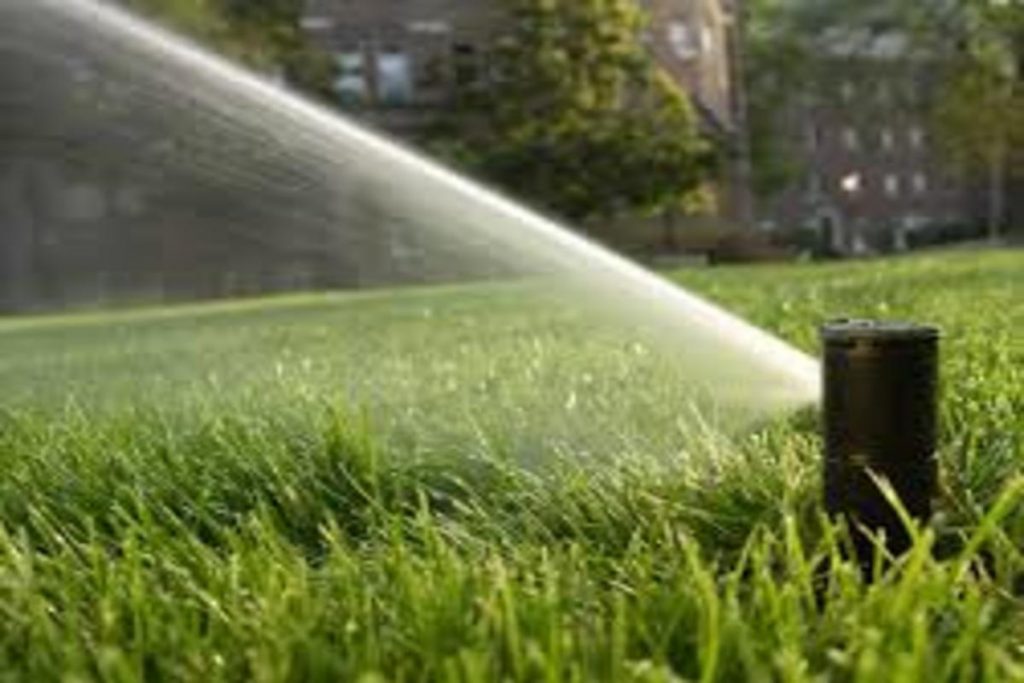

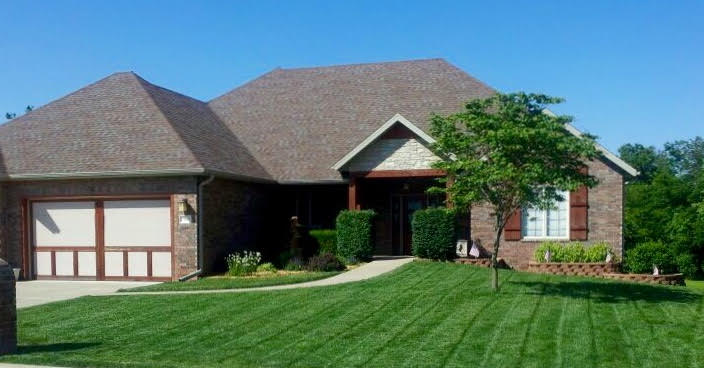
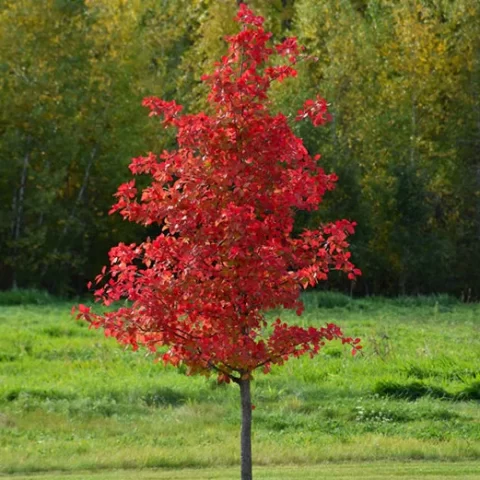
Got a Question? We’ve Got Straight Answers.
Whether it’s weeds, watering, bugs, brown spots, or that weird thing growing in the yard — chances are, we’ve already dealt with it. No fluff, no sales pitch, and no telling you what you want to hear just to make the sale. You’ll get honest answers, plain and simple, with a little friendly sarcasm along the way. We’re not here to waste your time — just to share what we know so you can stop guessing and get back to enjoying your lawn.
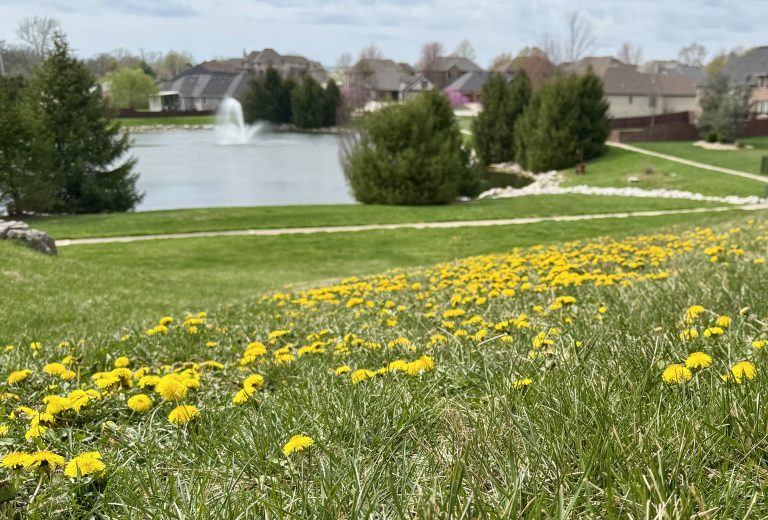
Winning the Battle Against Weeds
Weeds can be a headache, but most are manageable with the right approach. Here you’ll find straight answers to common weed questions — no fluff, no runaround. Just clear, honest information to help you understand what’s happening in your lawn and what to expect from our treatments.
Many broadleaf weeds, like henbit and dandelions, start to emerge in early spring. Our first application includes a pre-emergent to prevent grassy weeds like crabgrass, but pre-emergent products do not prevent broadleaf weeds. Broadleaf weeds require a post-emergent treatment, which only works once the weeds are actively growing.
If these weeds showed up shortly after your first application, it’s because they weren’t visible yet when the treatment was applied. Once they emerge, follow-up treatments will take care of them.
No — your timing is still right on schedule. Pre-emergent works by targeting grassy weeds like crabgrass before they sprout, and the ideal window for applying it in our area is between February 20 and April 15.
Even if you see a few weeds while you’re waiting, it doesn’t mean the timing is off. Early spring weeds like dandelions and henbit often appear before your first treatment, but they’ll be taken care of during your initial application.
The important thing is applying pre-emergent within the correct seasonal window — not before or after. As long as your treatment falls within that timeframe, your lawn is protected and the plan is working as it should.
It’s normal to spot new weeds, especially in early spring. Some weeds wait for the right conditions to appear — like an early warm spell, a late cold snap, or an unusual stretch of rain. Others have been in your soil for years, just lying low as dormant seeds until the timing is right.
If your lawn was aerated or verticut during fall seeding, that can also bring hidden weed seeds closer to the surface. Once they get sunlight and moisture, they tend to wake up.
The good news is, most broadleaf weeds are easily controlled with our treatments. If you see weeds between visits, give us a call and we’ll take care of them quickly.
It probably isn’t crabgrass just yet. In our area, crabgrass typically germinates when soil temperatures reach 55°F for at least three consecutive days — usually around late April or May in the Springfield area.
What you’re likely seeing is Bermuda grass starting to green up. Bermuda is a warm-season perennial grass, meaning it returns every year, and it’s common in many local lawns. It’s often mistaken for annual grassy weeds like crabgrass, foxtail, or goosegrass, especially as it first begins to wake up in spring.
Our Early and Late Spring Pre-Emergent applications are designed to stop annual grassy weeds like crabgrass before they have a chance to take over. Bermuda grass, however, requires a different approach. If it’s becoming a problem in your lawn, we can discuss control options.
Weed control is a process, not an instant result. Most broadleaf weeds, like dandelions, clover, and henbit, take 7 to 14 days to fully respond to treatment. In cooler or cloudy weather, it can take a little longer.
The weed control products used work by acting as synthetic plant hormones, causing weeds to grow too quickly and break down from the inside. During this process, it’s normal for weeds to look greener or even bloom briefly before they decline.
If it’s been more than two weeks since your treatment and the weeds are still thriving, service calls are available. Customers on our Club or Classic Plans receive free touch-up visits. Core Plan customers can request a service call for a small fee.
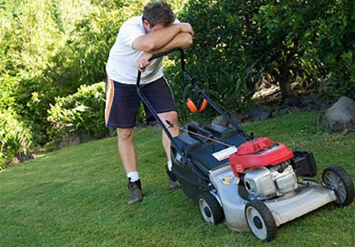

Better Lawns Start with Better Mowing
Proper mowing is one of the most important parts of maintaining a healthy lawn. Cutting too short, mowing too infrequently, or using dull blades can all stress your grass and invite weeds and disease. Here you’ll find clear answers to common mowing questions, so you can keep your lawn looking its best between treatments.
No, we don’t provide mowing services. Classic Lawns focuses on the parts of lawn care that make the biggest impact: fertilization, weed control, insect treatments, seeding, soil health, and sprinkler service.
However, we work alongside many excellent mowing companies in the area and are happy to recommend one that fits your lawn and your schedule. Just let us know — we’re here to help.
We recommend waiting until the next day, or at least 5–6 hours after your treatment. This allows the weed control portion of the application time to fully absorb into the weeds.
As for the granular fertilizer, mowing doesn’t affect it. The granules fall quickly to the soil and aren’t easily disturbed by mowing. Even if a few are moved, tens of thousands are applied during each treatment, so losing a small number won’t impact the results.
Most customers mulch their clippings, keeping the fertilizer in place. Even if you bag your clippings, your mower isn’t powerful enough to remove the granules from the soil. You may see a few in the bag, but it won’t affect the effectiveness of your application.
Yes — your treatment will still be effective. While it’s best for weed control products to sit on the plant for several hours, mowing shortly after application usually does not prevent results. The fertilizer is unaffected by mowing, and the weed control still works in most cases, even if the lawn is cut soon after treatment.
This situation comes up from time to time, and the products are designed to continue working through these kinds of disruptions. If your lawn was mowed immediately after treatment and you don’t see weeds responding within 10 days, just let us know — we’ll gladly return to spot-treat any areas that need it.
Proper mowing is one of the most important parts of maintaining a thick, healthy lawn. Here are a few key guidelines:
Mow at the right height. Tall fescue thrives when kept at 3.5 to 4 inches. Mowing high encourages deeper roots, better color, and improved resilience against heat and disease.
Keep your mower blades sharp. Dull blades tear the grass instead of cutting it cleanly, leading to poor color and increased risk of disease.
Mow consistently. Try not to remove more than one-third of the grass blade at a time. Mow as often as needed to stay within this range and avoid stressing the lawn.
Vary your mowing pattern. Change directions each time you mow to prevent grass from laying over and to reduce track marks from your mower tires.
Following these simple practices goes a long way toward keeping your lawn looking its best between treatments.

Protecting Your Lawn, Family & Pets
At ClassicLawns, we believe in responsible, thoughtful lawn care. Our treatments are designed to target problems in the lawn while keeping people, pets, and the environment in mind. In this section, you’ll find clear answers about how our products work, what to expect after an application, and how to manage your lawn with care and awareness throughout the process.
We recommend staying off the lawn until the application has dried, which typically takes about 30 to 45 minutes, depending on weather conditions. Once the lawn is dry, it’s fine to resume normal activity.
While no treatment is completely without risk, we focus on responsible application and targeted use of products. Fertilizer is applied in granular form, and weed treatments are directed only at problem areas — not sprayed across the entire lawn without reason. This helps minimize unnecessary product use while still delivering effective results.
Here’s a way to think about it: if these treatments were truly harmful to pets, we wouldn’t have nearly as many squirrels and rabbits darting across our lawns — and they certainly don’t wait around for the lawn to dry. And when it comes to comparison, what we apply is probably milder than many of the everyday cleaners in your home. Think about your toilet bowl cleaner — and what you put it on!
In short, with proper application and a short drying period, you can feel confident knowing that we approach every treatment with care, consideration, and a focus on reducing impact to your family, pets, and the environment.
Yes — maintaining a healthy lawn and being environmentally conscious can absolutely go hand in hand. At Classic Lawns, we take a thoughtful, targeted approach to treatments. We use granular fertilizers to reduce runoff and apply weed control only where it’s needed, rather than blanket-treating the entire lawn.
Our programs are based on applying treatments at the right time and in the right places, not just because it’s on the calendar. This approach is better for the lawn, better for the soil, and better for the environment.
If you're looking for a healthier lawn while keeping environmental impact in mind, we can build a plan that aligns with your goals — without compromising results.
Yes — the healthier and thicker your lawn becomes, the less it relies on products to stay that way. A dense, well-maintained lawn naturally crowds out weeds and strengthens the turf, reducing the need for extra treatments over time.
At ClassicLawns, we believe in building strong, healthy turf from the ground up. We focus on soil health, proper fertilization, and thick grass coverage so the lawn itself does much of the work keeping problems out.
We don't just spray and pray like other companies. Instead, we apply treatments only where and when they’re needed, which means fewer products over time as your lawn improves. Our goal is always to use a thoughtful, targeted approach that supports long-term lawn health and reduces the need for unnecessary treatments.
We care about your landscape just as much as you do. At ClassicLawns, we don’t just focus on the grass — we treat your entire yard with care and respect. You’ve put time, effort, and money into your plants, and the last thing we want is to risk harming something you’ve worked hard to grow.
That’s why we pay close attention around flower beds, trees, and shrubs, making sure to avoid sensitive areas during treatments. Our approach is always careful and targeted.
We take pride in treating every yard like it’s our own — because protecting your landscape matters to us every bit as much as it matters to you.
toward keeping your lawn looking its best between treatments.
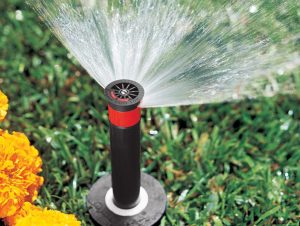
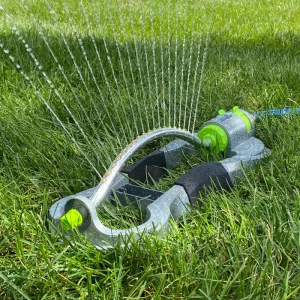
The Do’s and Don’ts of Watering
Watering is one of the most important factors in lawn health — but it’s also one of the most misunderstood. Whether you’re dragging hoses or relying on a sprinkler system, it’s not just about how much water you use, but how and when you apply it. Too little water stresses the lawn, but too much can do just as much harm. In this section, we’ll cover proper watering practices and common sprinkler system questions to help you keep your lawn healthy, hydrated, and growing strong all season long.
No, it does not all get washed away.
All our fertilizer treatments are granular and actually need to be watered in for best results. So, if it rained shortly after we treated your lawn, Mother Nature just took a task off your plate.
As for the weed control portion, a little rain shortly after application usually doesn’t reduce its effectiveness. In fact, light rain can sometimes help the weed control absorb faster. When it rains, plants open their stomates (tiny pores in the leaves) to take in water, and that can also help draw in our treatment.
A heavy downpour immediately after treatment might lessen the impact on the weed control. The fertilizer is still working fine, but we recommend giving the weeds 7 to 10 days to show signs of decline.
If they’re not wilting, curling, or dying off by then, just give us a call. We’ll come back and retreat the weeds as needed.
Also worth noting: when rain is in the forecast, we’re already thinking ahead. We don’t like wasting time or products any more than you do. That’s why we adjust our schedule when necessary and use treatments that can hold up to typical spring showers.
Most treatments do not need to be watered in immediately.
We recommend watering within 10 days for best results — if it doesn’t rain during that time. Even a heavy dew can help move the fertilizer into the soil. If it hasn’t rained in 10 days, your lawn probably should be watered regardless.
Fertilizer benefits from watering at some point, whether from rainfall, irrigation, or natural moisture.
Weed control does not require watering. Once the application dries, it is already working through the plant.
We typically start sprinkler turn-ons in April and continue through May, depending on the weather. Cold temperatures can still damage sprinkler systems, so we don’t rush the process.
We find it odd that it seems fine to have sprinklers running through a spring freeze, but in the fall there’s a desperate rush to get them blown out at the first whisper of cold weather.
Keep in mind, in early spring, there’s usually no shortage of rain. Soil moisture is high, and most lawns are getting plenty of water naturally.
For sprinkler customers, you’re already on our list. We’ll reach out to schedule your turn-on when the timing is right. We monitor soil temperatures more than air temperatures, since your sprinkler lines are insulated by the ground.
We’re able to turn the water on just to the backflow device, without running zones, activating timers, or turning on the full system.
Our test gauges hook directly to the backflow assembly, allowing us to complete the inspection safely and efficiently.
We complete most backflow tests by the end of March, well ahead of city deadlines. Most cities require backflow testing by June 1st, and in Nixa, the deadline is July 1st. Finishing early keeps you in compliance and avoids any last-minute issues.
After the test, we drain the water from the backflow to prevent any damage from freezing temperatures. The test is quick, clean, and meets all city requirements. Once completed, you’re all set — and the city is satisfied.
The best time to water is between 2:00 a.m. and 10:00 a.m. Watering early in the day helps reduce the risk of lawn diseases by allowing the grass to dry out under the sun. Watering in the evening leaves moisture sitting on the grass overnight, which increases the chance of disease.
That said, watering at the wrong time is still better than not watering at all—especially during hot, dry conditions.
For best results, water deeply and infrequently. Deep watering encourages stronger, deeper root systems. Lawns typically need about 1 inch of water per week to survive—and more to thrive.
A good rule of thumb is to water long enough to apply about half an inch of water at a time, two to three times per week.
Pro Tip:
An empty tuna can is roughly one inch tall. Place it in your lawn where your sprinklers hit. When the can is about half full, you’ve applied about half an inch of water. Water for that same length of time during each cycle to meet your lawn’s weekly needs.